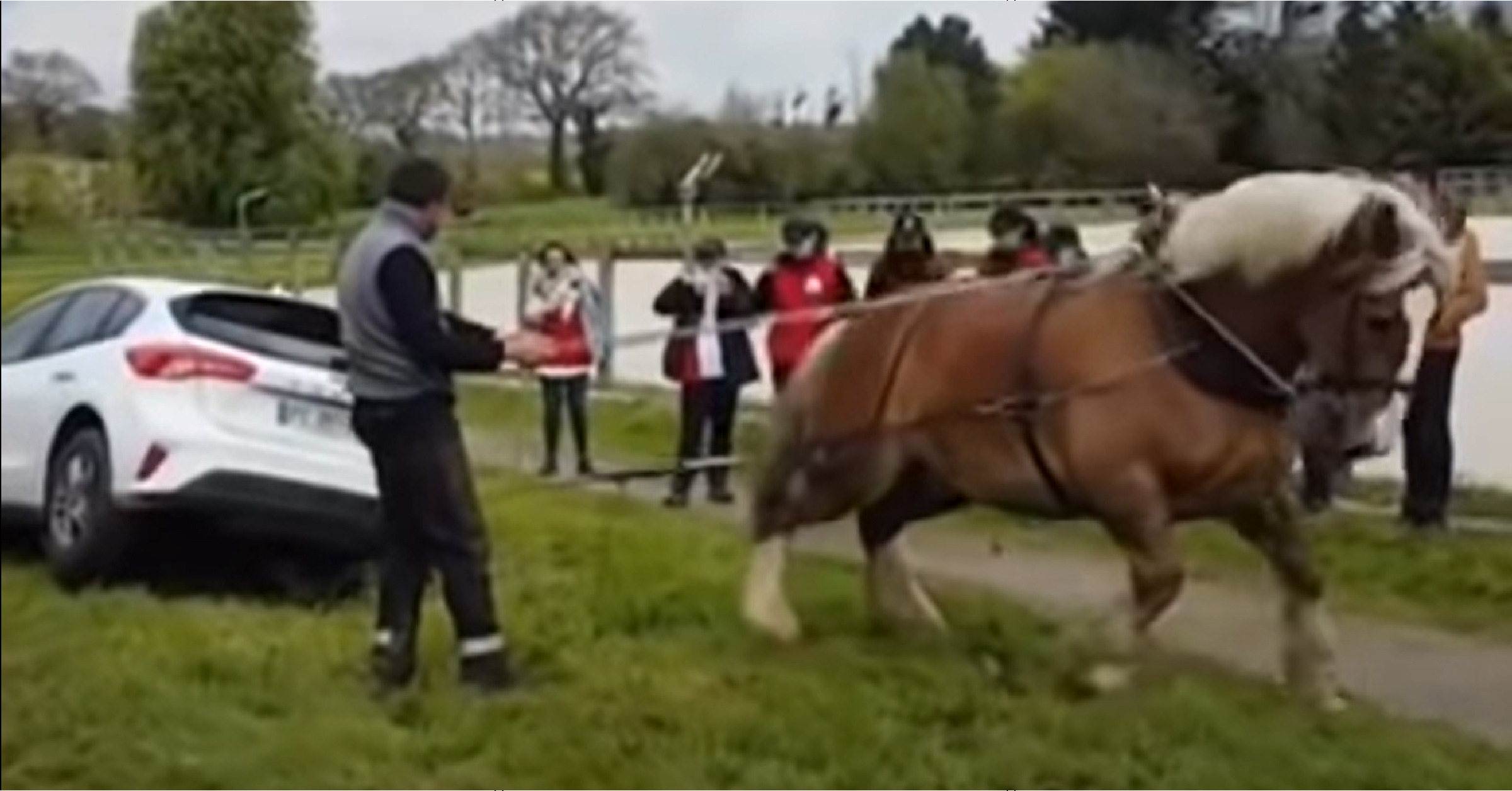What do you do when your car gets stuck in the mud? Well, a solution would be to call someone who has a car with a winch or to try and solve the situation yourself. But another solution would be, like in this video, to get help from a draft horse.

While the age of horse-drawn plows and carriages has passed, many horses are still used today for work purposes. Horses can be found working with people and for people in a variety of places.
Most horses are strong enough to pack or pull heavy loads. Their strength is part of their makeup. Horses have evolved by natural selection to have thick muscles, a large heart, and powerful lungs. Yet over the centuries, people have also bred some groups of horses to be even stronger.

Horses are simply amazing and helpful. They teach us to use muscles we never knew existed, but the most important lessons we learn from our horses have nothing to do with being in the saddle at all. We learn to be flexible, be present, be authentic, and to be honest with ourselves and with others around us.

The maximum optimal weight that a horse can support on its back is 10% of its total weight, reaching up to 15% without causing damage. In other words, a 450 kg horse could support a weight of 67.5 kg, although the optimal recommended weight would be 45 kg. This weight includes the weight of the rider, saddle, and the entire harness.

Sometimes we think that we can damage the horse’s back because our weight is greater than the maximum tolerable weight that the specimen can support.
Almost as important as the choice of horse breed, sex, age, training level, or character, we must also choose the weight that it could support without causing problems or pain when we ride it. So, if we want to take maximum care of the health of our horse and we know that by losing a few pounds we will help him; it is a good reason to do a little diet and he will thank us every time we get on our backs
